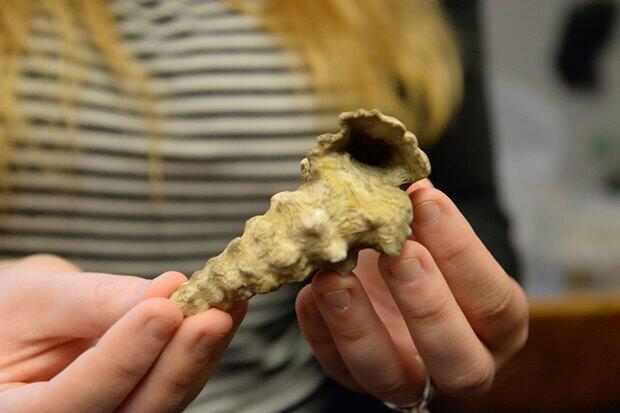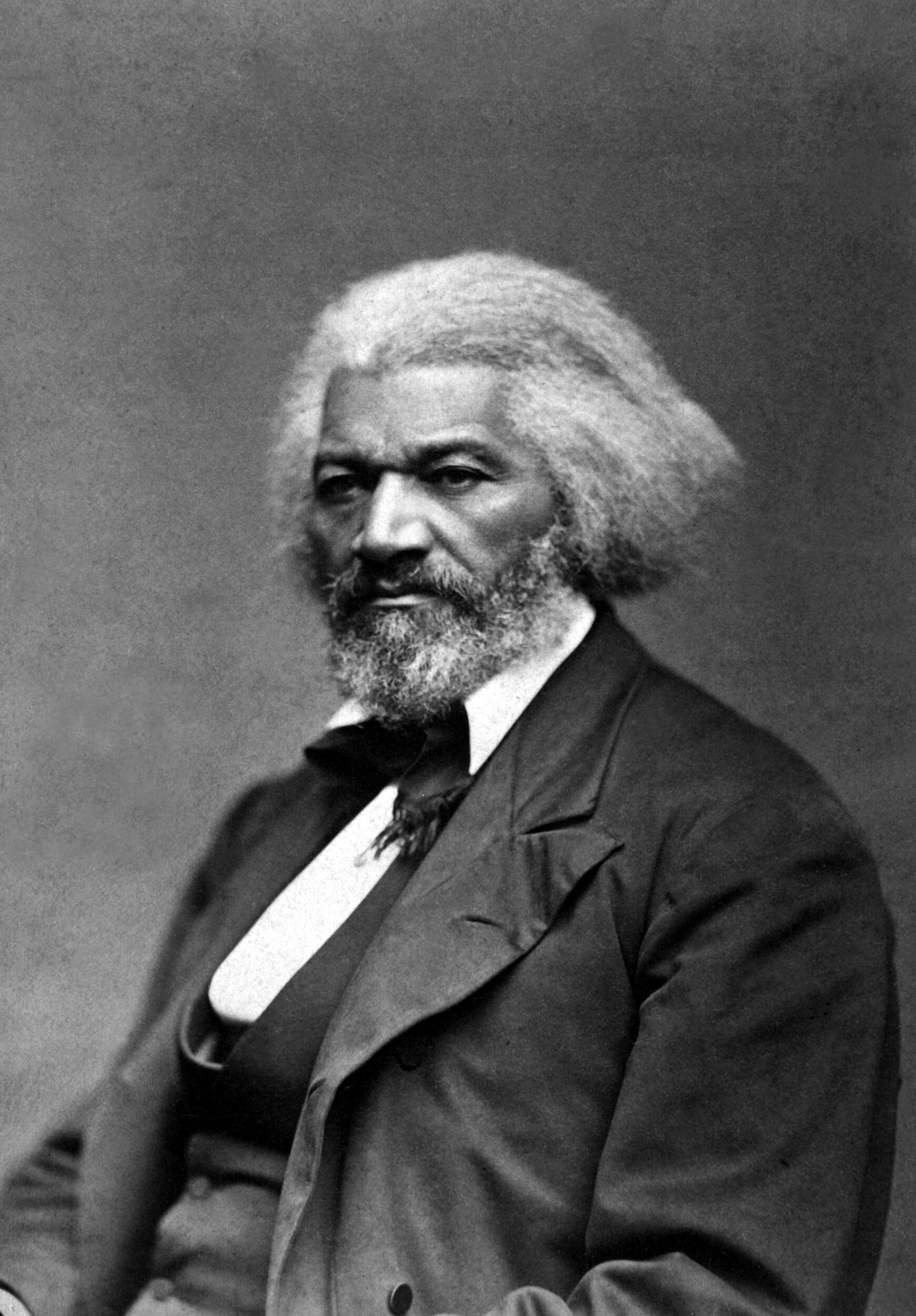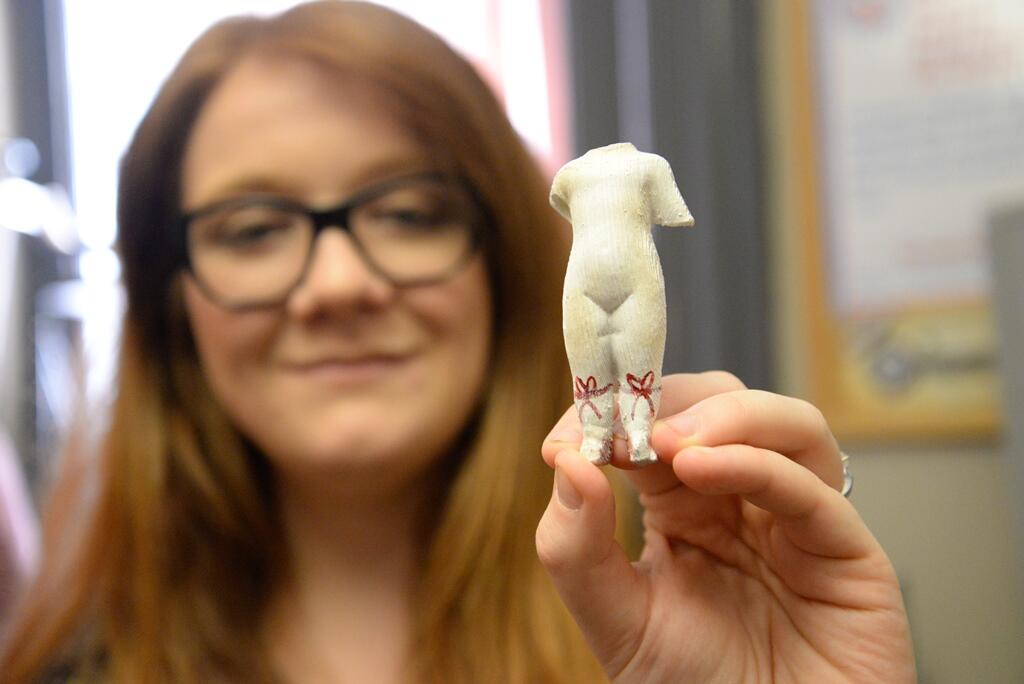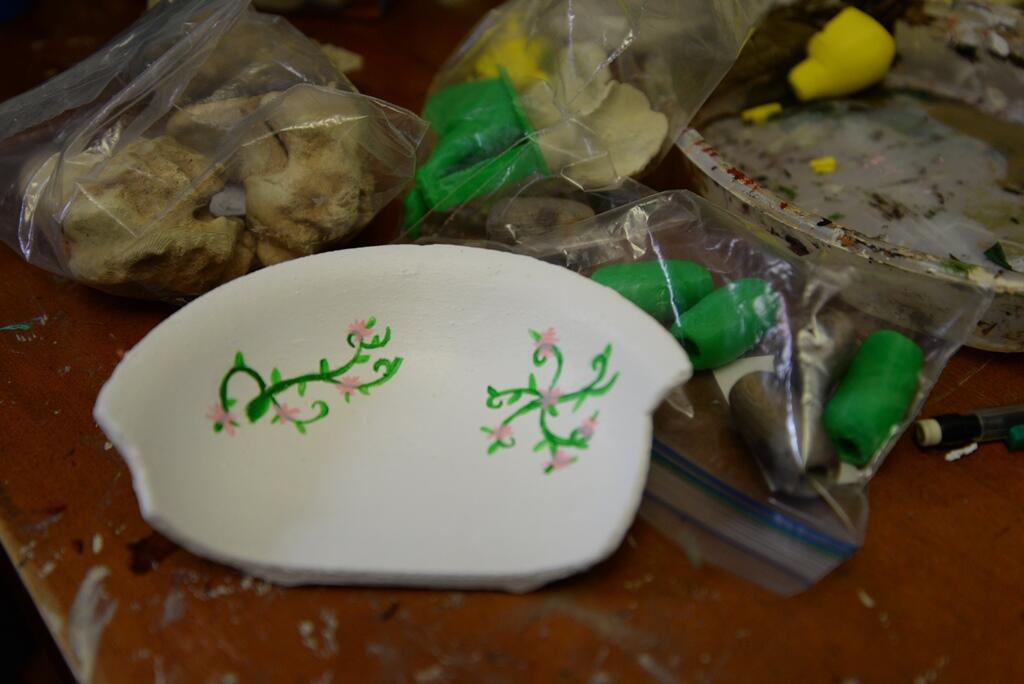
Feb. 12, 2018
In partnership with National Park Service, VCU lab 3-D scans artifacts associated with Frederick Douglass
Frederick Douglass’ 200th birthday is this month, and the Virtual Curation Laboratory at VCU is working to 3-D scan and 3-D print artifacts tied to the abolitionist.
Share this story
A Virginia Commonwealth University lab has been working in partnership with the National Park Service to 3-D-scan artifacts associated with 19th century African-American abolitionist, author and orator Frederick Douglass.
The Virtual Curation Laboratory, part of the School of World Studies in the College of Humanities and Sciences, specializes in 3-D scanning and printing of historical and archaeological objects. In January, Bernard Means, Ph.D., the lab’s director and a VCU anthropology instructor, traveled to the National Park Service Museum Resource Center in Hyattsville, Maryland, a federal collections repository, to examine artifacts from the Frederick Douglass National Historic Site in Washington, D.C.
At the center, he 3-D scanned objects such as a seashell, a brain coral specimen and a string of American Indian beads that had been collected by Douglass.

“The fact that we have artifacts that we know are associated with Frederick Douglass’ life gives us insights into his life that aren’t necessarily going to be preserved in the written record,” Means said.
The park service is working with Means to make the 3-D scanned artifacts associated with Douglass widely accessible to the general public and to have 3-D-printed replicas it can use as part of its public outreach and education efforts, including at a two-day celebration on Feb. 17 and 18 marking Douglass’ 200th birthday.
“They had selected a number of items that they had used in the past – things they could show people but not really pass around and let people handle,” Means said.
A number of the objects were from Douglass’ home while others were discovered at archaeological digs at the site. These archaeological artifacts include a clay doll, a piece of 19th century pottery, a 4,000-year-old American Indian point, oyster shells that may have been used as part of a pathway, a juvenile deer bones, a butchered cow bone and tobacco pipe fragments.
Some of the most fascinating objects were believed to be collected by Douglass himself, Means said. The string of American Indian beads, for example, includes beads from numerous cultures and time periods.
“One of the artifacts I found most interesting to me as an archaeologist is an American Indian arrow point,” Means said. “It probably dates to between 700 A.D. and 1600 A.D. It comes from a place in New York where he met his second wife. So whether he collected it himself or his wife’s family collected it, we don’t know. But to me, that’s really interesting. He collected artifacts and other things from his travels.”

In the 19th century, many intellectuals displayed objects they collected in a “cabinet of curiosities” that conveyed their worldliness. The items Douglass collected may have been part of such a collection, Means said.
“You showed people how intellectual you were not only by the books you had but the things you had. You’d have a shelf or shelves in your house, showing people you were literally a person of the world. Frederick Douglass clearly was doing that, too,” Means said. “How much fascination he had with American Indian cultures I’m not sure, but he clearly had some interest.”
When teaching about a historic figure such as Douglass, Means said, 3-D printing can be helpful for students to get a hands-on experience.
“When you’re talking to, say, kids about Frederick Douglass, they might think of him as something of a semi-mythical figure. He’s this brilliant orator, brilliant writer,” Means said, holding up a 3-D-printed replica of a large spoon found at the Douglass site. “But you might not think of him as an ordinary person. This spoon helps you understand that he was an ordinary person. He was a brilliant and extraordinary person, but he also had to eat.”
As part of the project, the Virtual Curation Lab has uploaded 3-D models of the Douglass artifacts to Sketchfab, a website that allows anyone to download the files and 3-D print replicas of the objects.
“We’re trying to get the word out to teachers, in particular, so that they can download [3-D scans] of these artifacts and print them for their classes,” Means said.

Kristen Egan, who majored in anthropology at VCU and graduated last summer, is working as a research assistant in the lab. Egan, who painted a number of 3-D-printed replicas from the Douglass site to make them look close to the original, has been developing a set of guidelines to help teachers and others paint artifact replicas.
“We have them on Sketchfab so anyone can download the [3-D scans] wherever they are, as long as they have a 3-D printer and Internet access,” she said. “But we’re taking it a step further beyond just the models, so that after you print it you can paint [the replica] to make it look like the real thing, giving even more depth to the conversation. You can say, ‘This is exactly what this looked like.’”
Subscribe to VCU News
Subscribe to VCU News at newsletter.vcu.edu and receive a selection of stories, videos, photos, news clips and event listings in your inbox.













